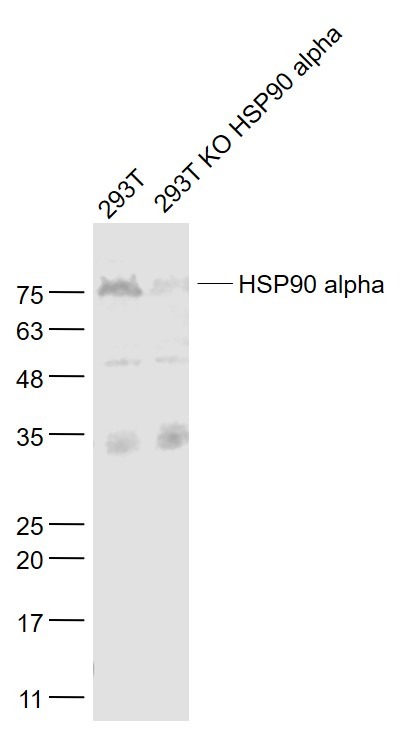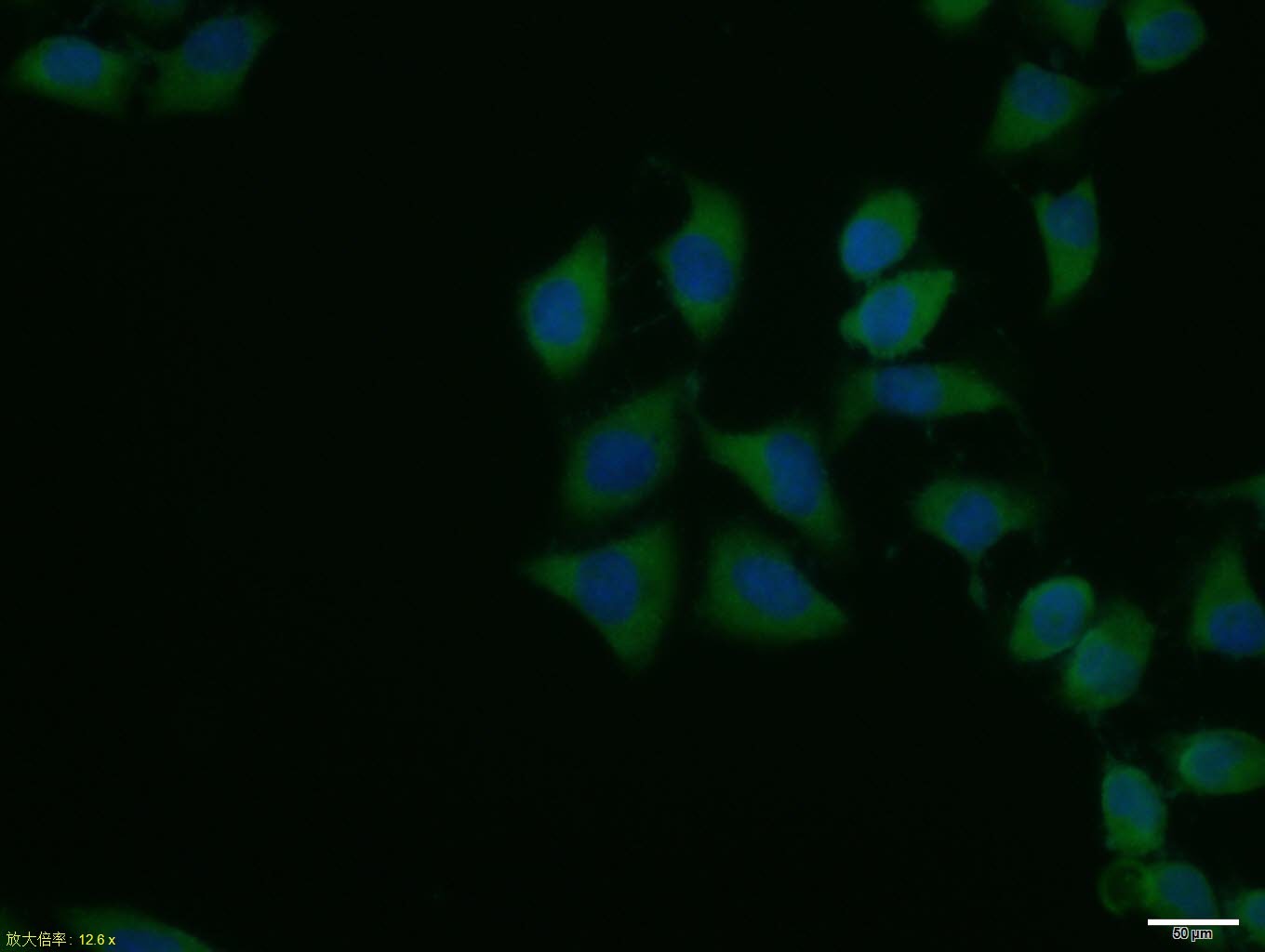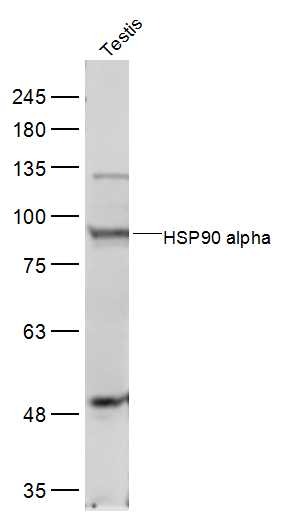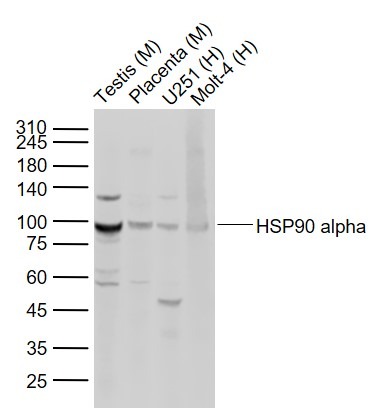Shopping Cart
Remove All Your shopping cart is currently empty
Your shopping cart is currently empty
Anti-HSP90AA1 Polyclonal Antibody is a Rabbit antibody targeting HSP90AA1. Anti-HSP90AA1 Polyclonal Antibody can be used in ICC/IF, IF, IHC-Fr, IHC-P, WB.
| Pack Size | Price | USA Warehouse | Global Warehouse | Quantity |
|---|---|---|---|---|
| 50 μL | $221 | 7-10 days | 7-10 days | |
| 100 μL | $372 | 7-10 days | 7-10 days | |
| 200 μL | $529 | 7-10 days | 7-10 days |
| Description | Anti-HSP90AA1 Polyclonal Antibody is a Rabbit antibody targeting HSP90AA1. Anti-HSP90AA1 Polyclonal Antibody can be used in ICC/IF, IF, IHC-Fr, IHC-P, WB. |
| Synonyms | Renal carcinoma antigen NY-REN-38, Lipopolysaccharide-associated protein 2 (LAP-2;LPS-associated protein 2), HSPCA, HSPC1, HSP90AA1, HSP90A, Heat shock protein HSP 90-alpha, Heat shock protein family C member 1, Heat shock 86 kDa (HSP 86;HSP86) |
| Ig Type | IgG |
| Reactivity | Human,Mouse (predicted:Rat,Chicken,Dog,Pig,Cow,Horse,Rabbit,Sheep) |
| Verified Activity | 1. Sample: 293t (Human) Cell Lysate at 30 μg 293T KO HSP90 alpha (Human) Cell Lysate at 30 μg Primary: Anti-HSP90 alpha (TMAB-00897) at 1/1000 dilution Secondary: IRDye800CW Goat Anti-Rabbit IgG at 1/20000 dilution Predicted band size: 81 kDa Observed band size: 77 kDa 2. Hela cell; 4% Paraformaldehyde-fixed; Triton X-100 at room temperature for 20 min; Blocking buffer (normal goat serum) at 37°C for 20 min; Antibody incubation with (HSP90 alpha) polyclonal Antibody, Unconjugated (TMAB-00897) 1:100, 90 minutes at 37°C; followed by a conjugated Goat Anti-Rabbit IgG antibody at 37°C for 90 minutes, DAPI (blue) was used to stain the cell nucleus. 3. Sample: Testis (Mouse) Lysate at 40 μg Primary: Anti-HSP90 alpha (TMAB-00897) at 1/500 dilution Secondary: IRDye800CW Goat Anti-Rabbit IgG at 1/20000 dilution Predicted band size: 81 kDa Observed band size: 98 kDa 4. Sample: Lane 1: Mouse Testis tissue lysates Lane 2: Mouse Placenta tissue lysates Lane 3: Human U251 cell lysates Lane 4: Human Molt-4 cell lysates Primary: Anti-HSP90 alpha (TMAB-00897) at 1/1000 dilution Secondary: IRDye800CW Goat Anti-Rabbit IgG at 1/20000 dilution Predicted band size: 81 kDa Observed band size: 90 kDa 5. Paraformaldehyde-fixed, paraffin embedded (mouse testis tissue); Antigen retrieval by boiling in sodium citrate buffer (pH6.0) for 15 min; Block endogenous peroxidase by 3% hydrogen peroxide for 20 min; Blocking buffer (normal goat serum) at 37°C for 30 min; Antibody incubation with (HSP90 alpha) Polyclonal Antibody, Unconjugated (TMAB-00897) at 1:400 overnight at 4°C, followed by operating according to SP Kit (Rabbit) instructionsand DAB staining.      |
| Application | |
| Recommended Dose | WB: 1:500-2000; IHC-P: 1:100-500; IHC-Fr: 1:100-500; ICC/IF: 1:100; IF: 1:100-500 |
| Antibody Type | Polyclonal |
| Host Species | Rabbit |
| Subcellular Localization | Cytoplasm. Melanosome. Note=Identified by mass spectrometry in melanosome fractions from stage I to stage IV. |
| Construction | Polyclonal Antibody |
| Purification | Protein A purified |
| Appearance | Liquid |
| Formulation | 0.01M TBS (pH7.4) with 1% BSA, 0.02% Proclin300 and 50% Glycerol. |
| Concentration | 1 mg/mL |
| Research Background | Hsp90 (heat shock protein 90) is a molecular chaperone and is one of the most abundant proteins in unstressed cells. It is an ubiquitous molecular chaperone found in eubacteria and all branches of eukarya, but it is apparently absent in archaea. Whereas cytoplasmic Hsp90 is essential for viability under all conditions in eukaryotes, the bacterial homologue HtpG is dispensable under non-heat stress conditions. |
| Immunogen | KLH conjugated synthetic peptide: human HSP90 alpha |
| Antigen Species | Human |
| Gene Name | HSP90AA1 |
| Gene ID | |
| Protein Name | Heat shock protein HSP 90-alpha |
| Uniprot ID | |
| Biology Area | MMPs,Tumor biomarkers,Heat Shock Proteins,Organelle Proteins |
| Function | Molecular chaperone that promotes the maturation, structural maintenance and proper regulation of specific target proteins involved for instance in cell cycle control and signal transduction. Undergoes a functional cycle that is linked to its ATPase activity. This cycle probably induces conformational changes in the client proteins, thereby causing their activation. Interacts dynamically with various co-chaperones that modulate its substrate recognition, ATPase cycle and chaperone function. |
| Molecular Weight | Theoretical: 81 kDa. |
| Stability & Storage | Store at -20°C or -80°C for 12 months. Avoid repeated freeze-thaw cycles. |
| Transport | Shipping with blue ice. |
| Size | Quantity | Unit Price | Amount | Operation |
|---|

Copyright © 2015-2025 TargetMol Chemicals Inc. All Rights Reserved.